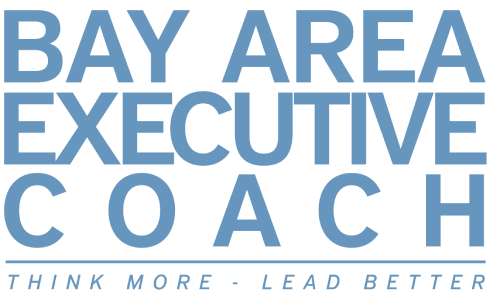Managing is a tough job but somebody’s gotta do it. We are not yet ready for AI to manage the masses nor are we ready for all companies to abandon management as a level. Moreover a great manager can bring out the best in someone and affect their professional (and even personal) life for years to come.
In our coaching of managers and leaders we often encounter mistakes managers make that hold them back from being as good as they have the potential to be. We thought it would be helpful to share some of the mistakes managers make in this 2-part series. We hope it’s helpful and accelerates progress through the ranks of management for you or someone you know.
“What you know is who you know.”
(Herminia Ibarra, INSEAD Professor of Organisational Behaviour)
Many executives find that they don’t have the time nor the energy to devote to developing their networks. Some also see the business of networking as unappealing, self-serving, even manipulative. Networking can feel like a distraction to someone who has climbed the ladder by excelling in operational demands. However, being a leader is different. As a leader, one faces strategic issues that require complex interpersonal relationships and exchanges. Herminia Ibarra insists that networking is a requirement for business leaders in today’s competitive environment. Not recognizing the importance of building these relationships can set a manager up for a grave career mistake.
Herminia Ibarra and Mark Lee Hunter describe three forms of networking in “How Leaders Create and Use Networks.” The first network is an “operational” network that is all about getting the job done efficiently. Most managers are adept at maintaining this network because of its direct impact on the daily business. The network may include their direct reports, people from other departments that affect daily business, customers, suppliers. The assembly of this network comes naturally to managers who excel at the tactical aspects of their jobs.
The second network is a “personal” network of mostly external contacts. This network does not impact the day-to-day but provides a group of like-minded professionals outside of the office. A LinkedIn report shows that 85% of jobs are filled through this type of network; still it often only receives attention when the need arises. As managers get increasingly busy at work, they tend to forget about this network and its value. That’s a strategic mistake as we just don’t know when our situation might change overnight as the coronavirus pandemic has proven to countless previously secure managers.
The third network is the most important for managers who aspire to become leaders in their industry. Unfortunately, this is also the network that many managers neglect or simply flounder in creating. A “strategic” network of peers and senior executives allows managers to see the bigger picture, share ideas, build partnerships, generate referrals, and keep up with new developments. This powerful two-way network benefits the executive, the whole team, and the company.
 So, the value is clear, but how to go about creating such a network bedevils many managers. Networking is not a unique talent most of us are born with, but rather a skill that improves with practice. To build a robust strategic network, managers should allow ample time and effort to cultivate their connections regularly at conferences, formal and informal meetings, and networking events. Even making a spontaneous phone call can be productive.
So, the value is clear, but how to go about creating such a network bedevils many managers. Networking is not a unique talent most of us are born with, but rather a skill that improves with practice. To build a robust strategic network, managers should allow ample time and effort to cultivate their connections regularly at conferences, formal and informal meetings, and networking events. Even making a spontaneous phone call can be productive.
To accelerate the process, a manager should regularly give to their network, by connecting people who could benefit by knowing one another, offering sincere and heartfelt feedback when appropriate, or by sharing valuable and timely information. By being generous with one’s network, a manager will soon find that the strategic network is developing reciprocal qualities. At that point, the network’s creator may make requests of the network without hesitation. As laid out so clearly in The Go-Giver by Bob Burg and John David Mann, one who gives should expect to receive as the fifth law of stratospheric success.
So, where does the time come from to cultivate these all-important networks? It is well worth it to delegate some daily responsibilities to allow time for this vital task. Doing so will actually serve two goals: mastering the art of delegation as well as finding time to strengthen networks.
 To the objection that networking is self-serving, Herminia Ibarra reminds us that everybody in the network benefits: “Depending on what you put into it and what you give back to it, to the extent that you are investing for the future, your network will be there for you.” A great thought.
To the objection that networking is self-serving, Herminia Ibarra reminds us that everybody in the network benefits: “Depending on what you put into it and what you give back to it, to the extent that you are investing for the future, your network will be there for you.” A great thought.
“Don’t be a know-it-all; be a learn-it-all.”
(Satya Nadella)
Another critical mistake some ambitious or novice managers make is acting like they have all the answers. Feeling vulnerable in their unfamiliar role, “know-it-all” executives are eager to portray themselves as capable leaders. They may resist seeking advice or input, reject opportunities for collaboration, exclude others from decision making, resist criticism, and surround themselves with people that support them. To their subordinates, they often come across as micromanagers. This mistake just might be the biggest obstacle to the future success of a manager.
It is easy to see why a manager may feel that their individual competencies would gain respect; indeed, it’s probably the reason why they were promoted. And yet, in a leadership role, it is more important to evaluate and execute the ideas of the team, not provide your own. Linda Hill, Professor at Harvard Business School, stresses that it is essential for a leader to demonstrate character (intention to do the right thing) and influence (ability to execute). This can only be accomplished by building strong, interdependent relationships. One way to do this is by nurturing and proactively extracting the collective brilliance of a team.
In shaping Microsoft’s office culture, Satya Nadella was inspired by Stanford psychologist Carol Dweck’s book, “Mindset,“: “The author describes the simple metaphor of kids at school. One of them is a ‘know-it-all,’ and the other is a ‘learn-it-all,’ and the ‘learn-it-all’ always will do better than the other one even if the ‘know-it-all’ kid starts with much more innate capability.”
Any executive can be a “learn-it-all” kid by embracing a growth mindset. This type of leader encourages instead of competes and never stops learning. They actually lean into areas they are not fully comfortable or confident to navigate within forcing some reliance on the knowledge and experience of others. Again, as with mastering the art of delegation, a twofold positive effect ensues when doing this as the confidence and capabilities of the team grows as the manager earnestly turns to them, and the leader learns to feel good, even confident in not knowing the ultimate answer to the problem before them. Furthermore, they understand that everybody in the organization has something of importance to offer and value collaboration within the team above all.
We hope this post has been helpful. Part 2 will be released soon. In the meantime, should you like to accelerate your own growth as a manager or leader and avoid mistakes that might derail your upward progression, please contact us to learn about our executive coaching services.
If you appreciated this article, then you’ll want to continue with reading part 2 here!
Featured photo sourced from Pexels which can be found here and secondary photo also sourced from Pexels can be found here.










